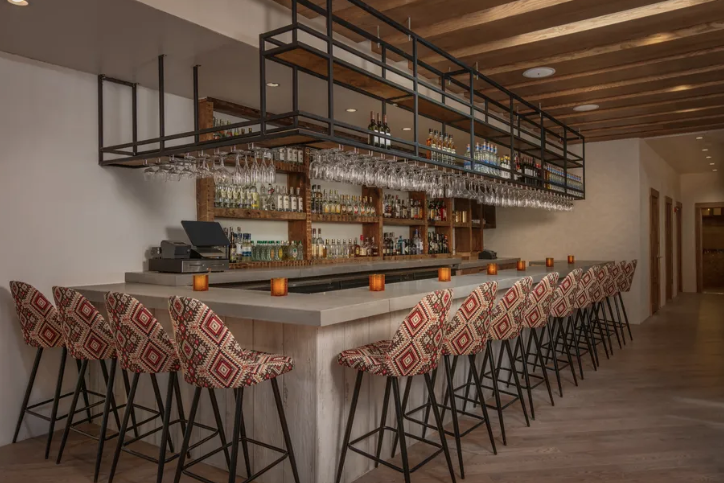Ambar Capitol Hill serves small plates with rustic Chic flair
Ambar on Capitol Hill is the seven-year-old birthplace of a Balkan and Mexican restaurant empire now sprinkled across the DMV.
Its mezze-focused flagship operation (523 8th Street SE). The 3,000-square-foot Balkan oasis is twice as large, with a new pastel-hued patio.
The rooftop welcomes guests 365 days a year with movable, teal slats that open up and close at the push of a button.
Its first-floor patio can fit dozens of diners across the two outdoor areas.
As you walk in, guests are surrounded by visually bold floor-to-ceiling stone walls.
Four separate dining areas create a vibe with their own names and themes:Chef’s Room, Rakia Bar, The Wine Cellar and Garden Room.

Balkan spirts and wine are poured at all four bars on-site.
A second-floor wine cellar, lined with a 360-degree assortment of vintage bottles, plans to evolve into a bar that hosts educational tastings.
Ambar ran a series of virtual wine classes during the pandemic to help build up a following for the less-known wine region.
Ambar is mbest-known for its small plates menu: familiar spreads, salads, Serbian small plates, flatbreads, and lamb lasagna.
$25 per person at lunch and $35 per person at dinner with a two-hour time limit.
A takeout menu for two ($39) includes mains like wild mushroom risotto or beef short rib goulash.




[…] First thing we need to discuss is the difference between Asian food and Western food. […]
[…] First thing we need to discuss is the difference between Asian food and Western food. […]